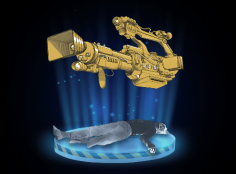Cloning, once relegated to the realm of science fiction, has captivated the imaginations of writers and readers alike for decades. From its humble beginnings as a speculative concept to its portrayal in contemporary works such as “Contraptions” by Jeffrey Weinzweig, cloning technology has undergone a remarkable evolution, reflecting both the hopes and fears of society at large. In this article, we’ll explore the history of cloning in science fiction, tracing its trajectory from early pioneers to futuristic dystopias, with a particular focus on its portrayal in “Contraptions.”
The Early Days: Speculation and Wonder
The concept of cloning first entered the public consciousness with the publication of Aldous Huxley’s “Brave New World” in 1932. In this seminal work, Huxley envisioned a future society where human beings are mass-produced through a process of artificial reproduction, laying the groundwork for later explorations of cloning in science fiction. Over the following decades, authors such as Philip K. Dick and Isaac Asimov further popularized the idea of cloning, exploring its ethical implications and philosophical underpinnings in works like “Do Androids Dream of Electric Sheep?” and “The Caves of Steel.”
The Dolly Effect: Cloning Goes Mainstream
The birth of Dolly the sheep in 1996 marked a major turning point in the public perception of cloning, bringing the once-theoretical concept into the realm of scientific possibility. Inspired by this real-world breakthrough, authors began to explore the potential applications and consequences of cloning in greater depth. Novels like Kazuo Ishiguro’s “Never Let Me Go” and Margaret Atwood’s “Oryx and Crake” offered nuanced explorations of cloning technology, probing its ethical complexities and moral dilemmas with a keen eye for detail.
Exploring the Ethical Quagmire: “Contraptions” and the Dark Side of Cloning
In “Contraptions” by Jeffrey Weinzweig, cloning takes center stage as a central plot element in a dystopian world where genetic manipulation runs rampant. Set against the backdrop of a society ravaged by scientific experimentation and corporate greed, the novel explores the dark underbelly of cloning technology, highlighting its potential for exploitation and abuse. As protagonists grapple with the consequences of genetic engineering gone awry, readers are forced to confront uncomfortable questions about identity, autonomy, and the nature of humanity itself.
Looking to the Future: Cloning in the 21st Century and Beyond
As cloning technology continues to advance at a rapid pace, it’s likely that its portrayal in science fiction will only become more sophisticated and nuanced. From utopian visions of a world without disease to dystopian nightmares of genetic manipulation run amok, the possibilities are as vast and varied as the human imagination itself. Whether serving as a cautionary tale or a source of inspiration, cloning in science fiction will undoubtedly continue to captivate and challenge readers for generations to come.
The Endless Fascination with Cloning
From its earliest incarnations in the pages of speculative fiction to its modern-day portrayal in novels like “Contraptions,” cloning has remained a perennially fascinating subject for writers and readers alike. As technology continues to blur the line between science and fiction, it’s clear that the exploration of cloning in literature will only continue to evolve, offering new insights into the human condition and the ethical dilemmas that accompany scientific progress. As we look to the future, one thing is certain: the story of cloning in science fiction is far from over.
